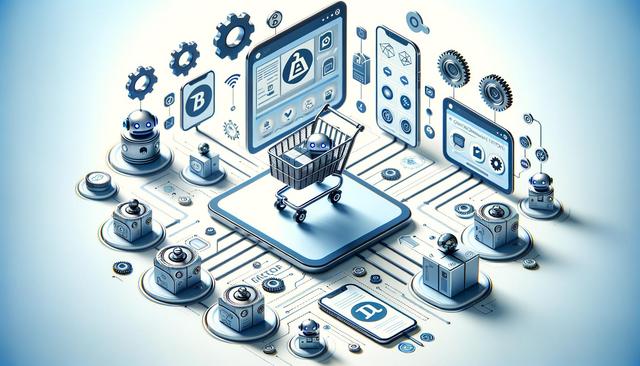Understanding Shopify Automated Stores
Shopify automated stores are online retail platforms built using Shopify’s e-commerce infrastructure, integrated with automation tools to handle routine tasks. These stores are designed to minimize manual operations by automating processes such as product imports, order fulfillment, inventory updates, and customer communication. For entrepreneurs, this means more time to focus on business strategy and marketing while the store handles day-to-day operations. Automation can be implemented through third-party apps, custom scripts, or built-in features within Shopify’s ecosystem.
Shopify’s flexibility makes it a popular option for both new and experienced sellers. By connecting various automation tools, a store can operate with reduced human intervention. This is especially useful for dropshipping businesses, where products are sourced from suppliers and shipped directly to customers. In such cases, automation manages everything from product syncing to order updates, creating a seamless experience for both the store owner and the customer.
Key Benefits of Automating a Shopify Store
Automating a Shopify store comes with a range of advantages that appeal to digital entrepreneurs aiming for efficiency and scalability. Among the most significant benefits are:
- Time Savings: Routine tasks such as updating product descriptions or tracking inventory can be handled automatically.
- Reduced Human Error: Automation reduces the risk of mistakes in order processing or data entry.
- Scalability: Automation tools allow store owners to manage larger product catalogs and higher order volumes with ease.
- Cost Efficiency: Fewer manual tasks often mean lower labor costs and operational expenses.
In addition to these operational advantages, automation facilitates better customer service. Automated email flows for order confirmations, shipping updates, and abandoned cart reminders help maintain communication without requiring constant manual input. This level of customer engagement can increase retention and satisfaction while freeing up time for business development.
Types of Automation Available for Shopify Stores
There are several categories of automation that store owners can integrate depending on their business model and needs. Some of the most common types include:
- Product Management Automation: Automatically updating product details, stock levels, and prices from suppliers.
- Order Fulfillment Automation: Syncing orders with suppliers or fulfillment centers to process and ship without manual input.
- Customer Relationship Management: Automated email sequences, chatbots, and customer segmentation.
- Marketing Automation: Scheduled social media posts, automated ad campaigns, and personalized product recommendations.
These functionalities are achieved through various tools and apps available on the Shopify App Store. Many of them offer integrations with third-party platforms like email marketing services, analytics tools, and supply chain management systems, giving store owners the flexibility to customize their automation stack.
Challenges and Considerations
While automation brings numerous benefits, it’s important to approach it thoughtfully. Not every process should be automated, and over-reliance on automation can sometimes lead to issues if not properly managed. For instance, automated product imports from suppliers might include incorrect data or duplicate listings, which can affect the store’s credibility. Similarly, automated emails that are too generic may fail to engage customers meaningfully.
Before integrating automation tools, store owners should evaluate their business goals and identify the areas where automation will have the most impact. It’s also vital to monitor automated processes regularly to ensure they are functioning correctly. Some key considerations include:
- Ensuring product data accuracy from suppliers
- Monitoring customer feedback on automated communications
- Testing automation workflows periodically
- Maintaining a balance between automation and personal touch
A strategic approach to automation means using it as a tool to enhance operations, not as a complete substitute for human oversight. With proper planning and monitoring, Shopify automated stores can run efficiently without sacrificing quality or user experience.
Setting Up an Automated Shopify Store
Getting started with an automated Shopify store typically involves a few key steps. First, entrepreneurs need to set up a Shopify account and choose a theme that aligns with their brand. From there, integrating automation tools becomes the next priority. This may include installing dropshipping apps, connecting with email marketing platforms, or enabling inventory management systems.
Here’s a simplified overview of the setup process:
- Create a Shopify account and select a niche
- Choose and customize a store theme
- Install automation apps for product sourcing and order fulfillment
- Set up automated email workflows and customer support tools
- Test each automation process to ensure proper functionality
It’s also helpful to use analytics tools to track performance and identify areas for improvement. As the store grows, automation settings can be adjusted to accommodate new products, promotions, or customer segments. This adaptability makes Shopify automated stores a strong solution for long-term growth in the e-commerce space.
Conclusion: Is an Automated Shopify Store Right for You?
Shopify automated stores offer a streamlined path for entrepreneurs looking to enter or scale in the e-commerce market. With the right tools and a strategic setup, these stores can handle many of the repetitive tasks that often consume time and resources. However, success still depends on careful planning, regular oversight, and a clear understanding of your market.
For individuals seeking an efficient way to run a digital store with minimal day-to-day involvement, automation presents a compelling option. Whether you’re starting a new venture or optimizing an existing one, embracing automation within Shopify can contribute to a more manageable and scalable business model.




Leave a Reply